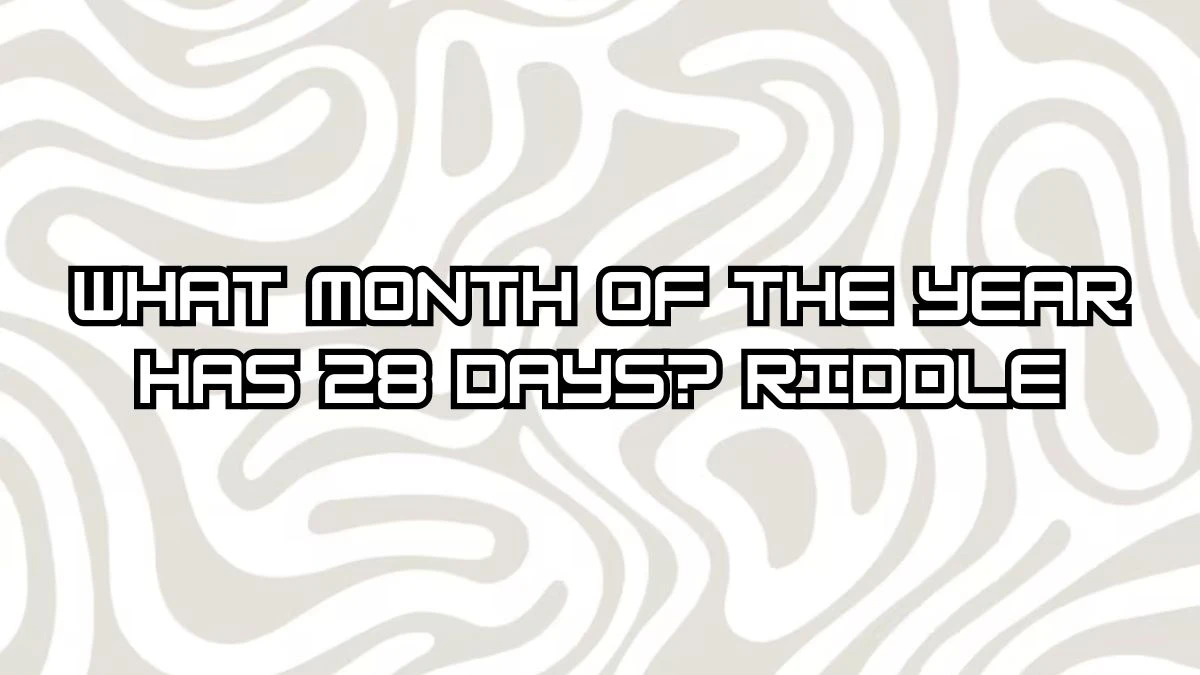What month of the year has 28 days? Riddle Answer Upgraded
by
Updated Jun 13, 2024

What month of the year has 28 days? Riddle Explanation
The riddle asks, "What month of the year has 28 days?" To understand the answer, we need to think about how many days are in each month. Some months have 30 days, and others have 31 days. February is known for having 28 days, except in leap years when it has 29 days.
The riddle is tricky because it wants us to think carefully. If we look at the calendar, every month has at least 28 days. So, while February always has 28 days, all the other months also have 28 days before they reach 30 or 31 days.
The riddle plays with our assumptions and makes us realize that even months with more days still include the first 28 days. This clever twist helps us see the answer from a different angle.
What month of the year has 28 days? Riddle Hints
Let's see this Hints to the clue "What month of the year has 28 days?".
- Think about all the months in a year.
- Don’t just focus on February.
- Consider how many days each month is.
- Remember that months with 30 or 31 days also include 28 days.
- The riddle is about looking at all the months, not just one.
What month of the year has 28 days? Riddle Answer
Did you get the answer? Yeah! Let's reveal the answer here.
The answer to the Clue "What month of the year has 28 days?" is Every month has 28 days.
What month of the year has 28 days? Riddle Answer Explanation
The riddle "What month of the year has 28 days?" is designed to make you think differently about the calendar. Initially, you might think the answer is February because it has 28 days in common years. However, the riddle's cleverness lies in the fact that all months have at least 28 days.
Even months that have 30 or 31 days must pass through the 28th day to reach the end of the month. This means that while February is the shortest month, it is not the only one with 28 days. The trick is to realize that every single month, from January to December, includes 28 days.
The riddle encourages you to rethink your assumptions and recognize that the answer encompasses all the months, not just the one we typically associate with having 28 days




